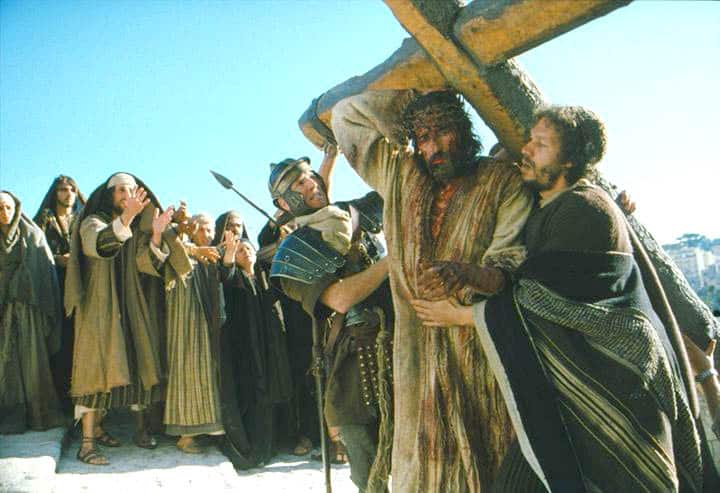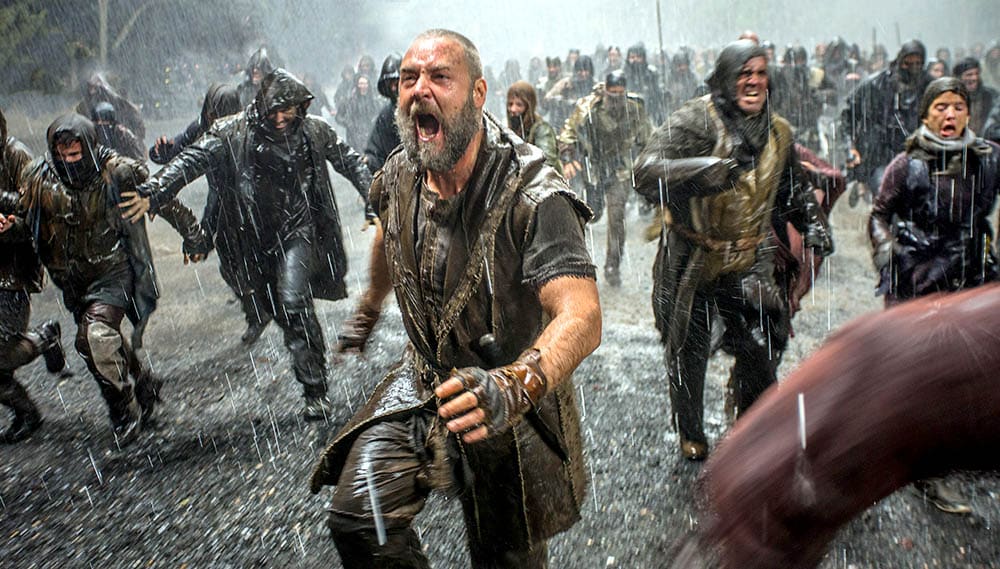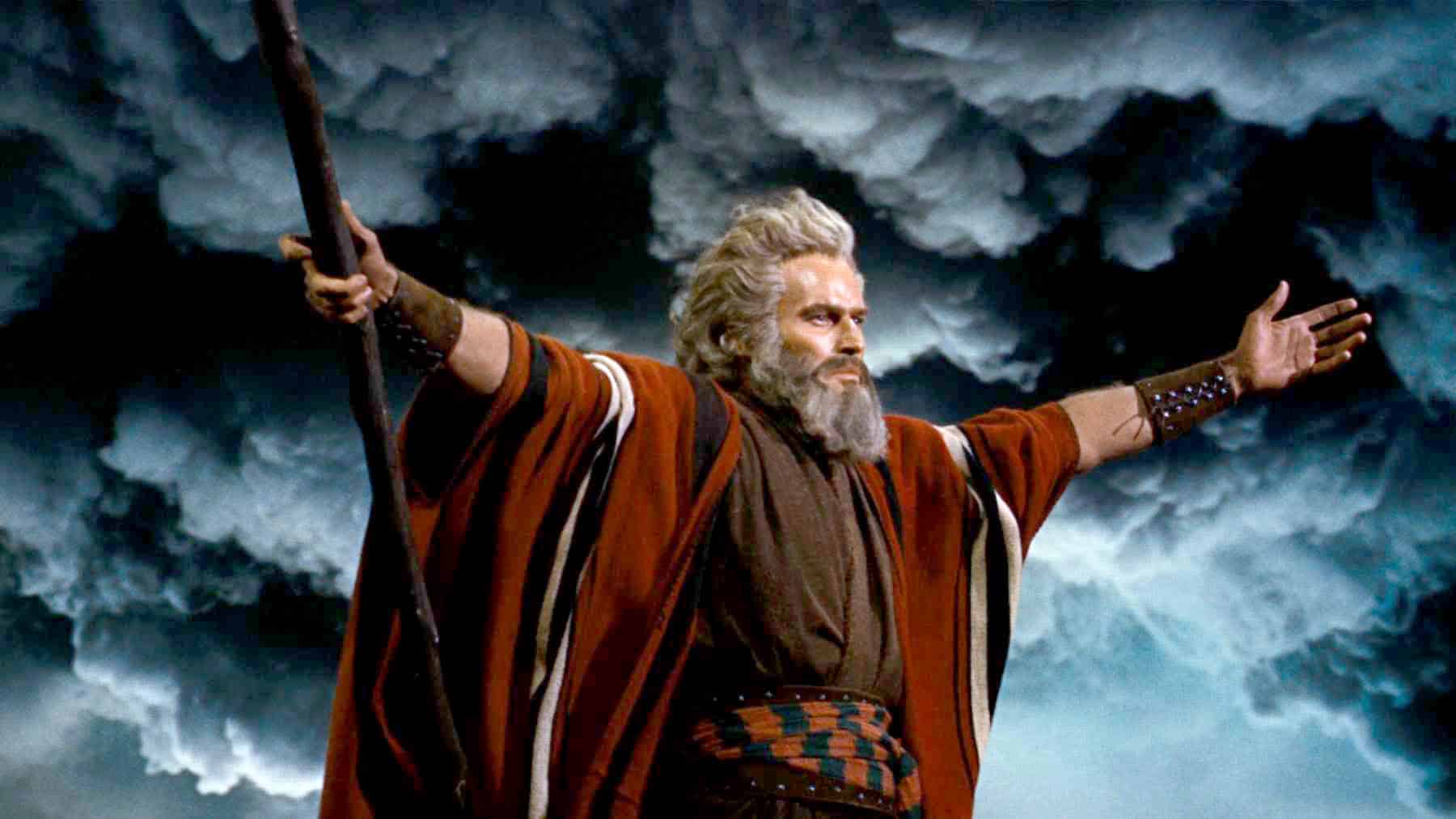It’s unsurprising that religious movies have fallen in popularity at the box office in recent decades.
It’s not exactly a secret that religiosity in America is in a decline. In the 1940s, over 90 percent of the U.S. identified as Christian. Today, the number stands closer to 70 percent, with 22.8 percent having no religious identity. Non-Christian denominations are largely unmoved.
But what actually prompted the rise of the religious epic in the first place, and what kept it around so long? Was it merely the religiosity of America, or were there additional pressures that reinforced its supremacy?
As the religious movie has fallen from unifying to niche, how has its function as a film evolved?
Let’s take a look.
Christian Films: Precursor to Comic Book Blockbusters
Since movies have been around, directors fell back on the Bible as a source of inspiration for their new flicks.
As the United States was much more religiously homogenous, the bible served as a shared cultural touch point. Directors, therefore, could pick a story from this well-known text, and audiences would automatically be keyed in to what story the director was selling.
In a time when movies were new, it helped to have an identifying element that audiences could latch onto to help get butts in seats.
In a way, the use of biblical stories in movies is akin to how Hollywood relies on existing IP (Intellectual Property) to draw in audiences. Audiences see Star Wars because they already know Star Wars. Hollywood orders another superhero movie because Hollywood knows superhero movies make money. These are safe bets.
Pre-franchise, the bible served as this existing IP.
Religious Films Spark Moral Decency Movement
Cecil B. DeMille, one of the greatest epic directors of all time, produced a trilogy of silent-and-talking religious movies in the 1920s and 1930s that were very popular.

His final movie of that trilogy, The Sign of the Cross, sparked a tremendous amount of controversy with its rather graphic content. It eventually sparked the creation of the Catholic League of Decency, which would work to combat material they viewed as contrary to that of the Church.
At this point, moral standards for decency across the film industry became a force to be reckoned with. Throughout the 1920s and 1930s, films saw release with risqué content that many religious leaders strenuously objected to.
Because of the fact that this form of art (film) could be distributed throughout the country, far more people could see the controversial content already seen in traditional theatres.
MPAA & Hays Code: Bigotry Masquerades as Piety
By 1934, the MPAA (Motion Picture Association of America) put in place the Motion Picture Production Code (or Hays Code). This code put a great number of restrictions on the content that any film could have.
Films could not show interracial marriage, homosexuality, sexual acts, or even have an immoral character not receive justice. In short, movies had to promote the agreed upon morality of the U.S. at the time.
For big-ticket Hollywood blockbusters, the easiest solution was to pick a religious story and turn it into a movie. These religious stories possessed:
- Ready-made familiarity with the public
- Baked in morals, thus avoiding agonizing tangles with the MPAA over questionable content

The religious epic went from being just an easy business solution to get butts in seats to being a vital and secure genre where Hollywood could count on making money while also being on the good side of powerful censorship organizations such as the MPAA or the Catholic League of Decency.
Indeed, Demille’s The Ten Commandments in 1957 was the highest grossing film of the decade, making $122 million on a budget of $13 million (the most expensive budget at the time). In its lifetime, Ten Commandments is estimated to have sold over 262 million tickets.
From the 1930s to the 1960s, these religious movies served as an unifying force.
Everyone knew these stories because the country was religiously homogenous, and these stories came as relatively scandal-free. Hollywood capitalized on this trend.
The Era When Patriotism = Christianity
But just making money and appeasing the Hays Code weren’t the only reasons why the religious movie was in such an upswing during this time.
Prior to WWII, the Russian Empire had imploded, and the USSR had arisen in its wake. The USSR, the world’s largest communist country, had publicly stated its objective to end religion within its country. It wanted to establish state atheism.
The U.S. found itself increasingly in opposition with the newly dominant USSR. An uprising of communist fear was rampant through the U.S. government and public.
Countries around the world (China, North Korea, eventually Cuba) were turning to communism in opposition to the U.S.
With the embrace of communism came an embrace of atheism.
America felt threatened.
McCarthism & Red Scare Usher in Even More Religious Films
America’s fear turned to paranoia. In the 1950s, Joseph McCarthy led a series of persecutions against supposed communists across the United States. His search targeted politicians, entertainers, diplomats, and professors.
Hollywood established a blacklist: a list of people deemed communists and thus not safe to work with. It was a culturally and creatively dangerous time in America. Artistic work saw censorship from multiple angles, and any step out of line might lead to professional ruin.
The religious movie — particularly the religious epic — proved to be an answer to all of these anxieties. Communists couldn’t distribute a movie about Christ, right?
Surely not!
So Hollywood again went to the Biblical story well. This served to reinforce the moral and ideological fabric of U.S. society. But also provided artistic and professional cover for the industry and artists under its employ.
Religion, as a concept, really took one for the team.
Religious Movies Fall Out of Favor
So why the decline of the religious movie?
After the end of World War II, the United States emerged on the world stage as nearly unscathed from the horrors of war. The U.S. felt economically invigorated and convinced of its moral authority. It had put a stop to the truly immoral Nazi regime.
Again, this united sense of morality in America, along with a religiously homogenous public, meant that religious movies were a natural complement and economically viable.
By the late 1960s and early 1970s, this united sense of morality had begun to crumble. Perhaps it was Kennedy’s failed invasion of Cuba at the Bay of Pigs. Perhaps it was the horrific reality of white supremacy put on full display during the Civil Rights Movement. And perhaps it was America’s failure in Vietnam.
Or perhaps it was the lingering realization that McCarthy was full of hot gas and had destroyed the lives of countless Americans just for a taste of political relevancy.
Honestly, it was all of these and more.
But the result was that by the 1970s America was in no way morally united. It certainly was not capable of outwardly projecting what morals it wished to trumpet in response to communism.
Communism hadn’t fallen; America’s naïve belief in its cultural superiority had instead come crashing back to Earth.
At the same time this was happening, there was an additional element sowing the seeds of the religious movie’s decline.
Hays Code Breaks Hold, Religious Movies First Casualty

From the 1950s through the 1970s, directors working on non-blockbusters (especially film noir) were pushing the boundaries of what was acceptable under the code.
Throughout its existence, film directors used innuendo, darkness, and implication to thinly conceal non-Hays Code approved elements such as homosexuality, murder, or even sexual union.
This continuous practice of pushing the boundary eventually crossed the line in 1959’s Some Like It Hot. With its cross-dressing and queer characters, this film did not receive approval from the Production Code.
Instead of changing any elements, the studio simply released the film without approval. It made $40 million on a budget of $2.9 million. This proved that The Production Code was not the iron barrier between Hollywood and the Public.
This combination of eroding moral certainty in America along with the toothlessness of the production code caused the entire Hays Code system to collapse, and with it, the Religious Epic.
MPAA Ratings Usher in Age of Moral Grays in Hollywood
In the Hays Code’s wake, the MPAA rolled out the movie ratings: G, PG, R, and X; which have now become G, PG, PG-13, R, and NC-17. This rating system allowed movies to create more varied and provocative content, while still keeping the content away from younger audiences.
Movies could now sit inside a band of appropriateness. Not simply “approved” or “not approved.” There now existed a spectrum of morality present in American film, where it had once been so black and white.
This new rating system reflected a similarly heterogeneous public. The U.S. was changing. Communists were not being fired. Wars were not de facto considered morally just.
As the US public became less morally homogenous, it became less religiously homogenous. It is not fair to suggest that these two circumstances share a cause-and-effect, but the end result is that the U.S. public became and is still continuing to be fractured into groups that hold significantly different values and beliefs.
The Bible, while being well known, is no longer the singular font of unity as it once was.
Religious Movies Find New, Niche Purpose

As the Christian population in the U.S. has declined, the ways in which the religious movie has been used has changed. Since the religious movie is not a unifying force, and (since the fall of communism) hasn’t been needed to project a national sense of morality, the religious movie had to find another purpose.
As of late, the religious movie’s purpose seems to have been to galvanize the believers of its particular religion.
Take The Passion of The Christ for example. The Passion of the Christ is the highest-grossing Christian movie of all time, with a box office of more than $600 million. The movie, starring Jim Caviezel as Jesus Christ, was unsurprisingly heavily marketed to Churches.
In return, many of these Churches used The Passion of the Christ as a way to evangelize for their congregations; many Churches set up tables and booths outside of theatres showing The Passion.
Christianity was as much of a marketing tool for The Passion of the Christ as The Passion of the Christ was for Christianity at large.
Modern Religious Movies: Defense of Faith
As of late, there has been an upswing in smaller scale, niche religious movies – especially Christian movies.
Movies like God’s Not Dead have found great success in making very strong multipliers on their small budgets (God’s Not Dead made $60 million on a budget of $2 million).
What’s different about these movies about faith is that they aren’t necessarily based on stories from religious texts. Instead, they’re based on modern instances where God is at work.

In God’s Not Dead, one of the main conflicts revolves around a student who argues with his atheist professor whom demands his students sign a declaration that “God is dead” in order to pass his class. By the end of the conflict, the entire class sides with the student, and eventually the professor converts to Christianity.
While the movie does feature an intellectual atheist converting to Christianity, God’s Not Dead is not intended for the religiously skeptical. Instead, this pro Christian film reflects the deep rooted anxieties of a once dominant religious group as it grapples with its diminishing place in society.
The conversion of the professor is not for the intelligentsia; it is for the believer to see that there might be hope to beat back the agnostic tide.
You can feel the movie quietly stressing these ideas:
- The world is out to get us
- If we stick together, we can beat back these ugly atheist attacks
- It’s okay to be a Christian
In effect, these religious movies work to shore up a pre-existing religious base, not expand it.
This is the current state of the religious movie: a niche form of entertainment that works to unite the believers of a faith in a time when their faith is being challenged by changing morals, beliefs, and demographics.
The End of Religious Epics?

Attempts at grand religious epics have been scattershot at best, with Noah doing reasonably well and Exodus: Gods and Kings falling apart at the Box Office.
This is because these stories are no longer cultural touch points the way they once were. For better or for worse, the Bible is not the unifying force in America it once was.
Instead, modern myths like Star Wars and The Avengers have superseded Christian movies as the great unifying stories of our age.
Even these new myths have served to guide and reinforce our morals in a fragmented America.
“Fear leads to anger, anger leads to hate, hate leads to suffering.” – Yoda
“I don’t want to kill anyone, but I don’t like bullies. I don’t care where they’re from.” – Captain America
“The Force will be with you, always.” – Obi-Wan Kenobi

What a fascinating subject and insightful article! Thanks for sharing your thoughts, Nathan.